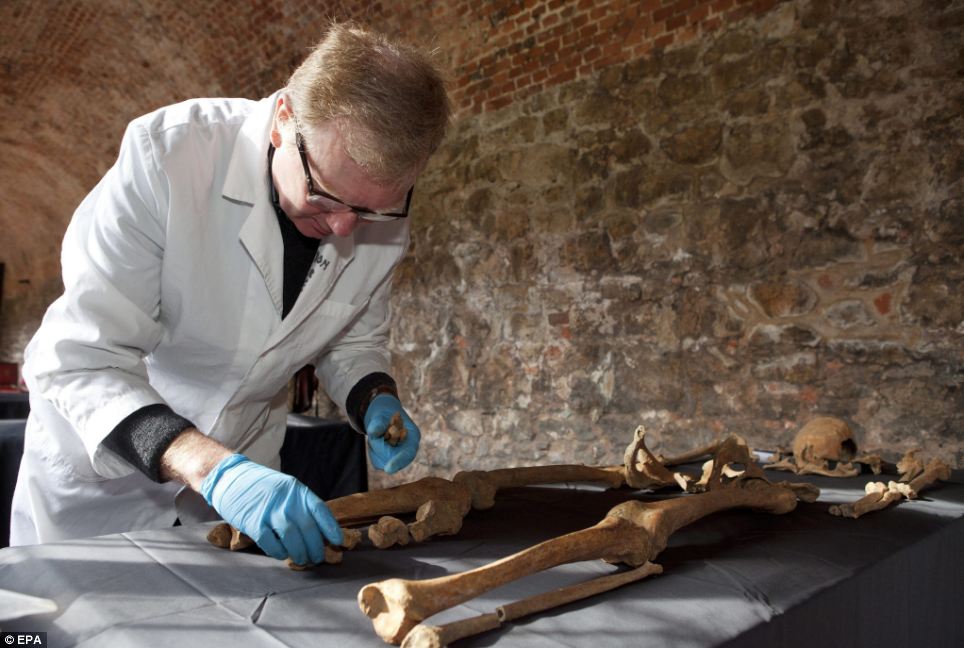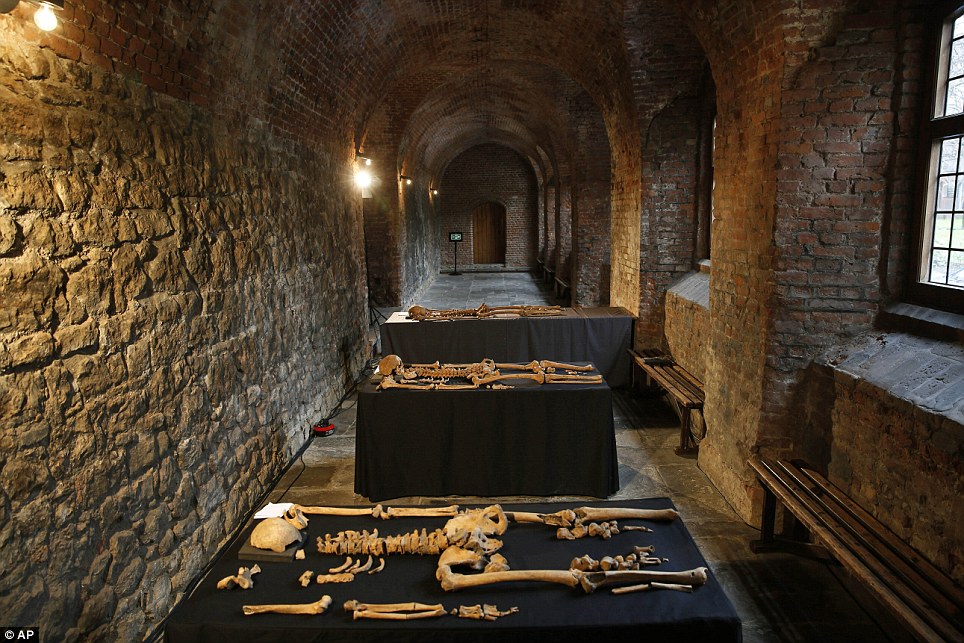Workmen building a new 73 mile railway have come across a plague pit filled with the victims of the Black Death in one of the busiest areas of London:

Carefully laid out skeletons thought to be from a 14th century burial ground that have been discovered in London during work on the £14.8billion Crossrail project

Don Walker, an osteologist from the Museum of London's Archaeology department, inspects a skeleton
 Sizing things up: The skeletons were carefully laid out in rows eight feet beneath the surface
Sizing things up: The skeletons were carefully laid out in rows eight feet beneath the surface

The skeletons were more than 8ft below a road between Farringdon and Barbican Tube stations

DNA experts are working with archaeologists at the Farringdon site to try to identify the exact cause from bone samples
 Delicate operation: Archaeologist and site supervisor Sam Pfizenmaier from the Museum of London's Archaeology department working in a grout shaft
Delicate operation: Archaeologist and site supervisor Sam Pfizenmaier from the Museum of London's Archaeology department working in a grout shaft
 Locator: The skeletons were discovered buried underneath a road in Charterhouse Square in London
Locator: The skeletons were discovered buried underneath a road in Charterhouse Square in London
They have lain unseen for centuries – a carefully arranged group of skeletons deep beneath what became one of the busiest areas of London.
Millions of feet have tramped unwittingly above them through the years; thousands of tons of earth and rubble concealed their grave.
But yesterday it was hoped that the DNA within the nine sets of remains would unlock a mystery that has baffled and divided medical minds for generations: what caused the Black Death in 1348?

Carefully laid out skeletons thought to be from a 14th century burial ground that have been discovered in London during work on the £14.8billion Crossrail project

Don Walker, an osteologist from the Museum of London's Archaeology department, inspects a skeleton
They were discovered during excavation work for the £14.8billion Crossrail project, currently carving a subterranean path across London.
They were more than 8ft below a road between Farringdon and Barbican Tube stations, leading internet wags to suggest they probably died waiting for a Circle Line train.
In fact the bodies are believed to have been among the 1.5million Britons who died when the plague swept through Europe.
Emergency mass graves were dug, but the corpses were not simply thrown in. Men and women were placed side by side in uniform rows, often with hands folded across the torso.
A similar skeleton formation was found in the 1980s at nearby Smithfield, and as many as 50,000 might have been buried in the area over three years.
Crossrail lead archaeologist Jay Carver said: 'This is a highly significant discovery and at the moment we are left with many questions that we hope to answer.
'We will be undertaking scientific tests on the skeletons to establish their cause of death, whether they were plague victims from the 14th century or later residents, how old they were and perhaps evidence of who they were.
'However, at this early stage all points towards this being part of the 14th-century emergency burial ground.'
Around a third of the population of Britain died in the Black Death. Estimates of how many perished in Europe and elsewhere vary between 25million and 200million, making it the grimmest and most destructive pandemic in human history.
DNA analysis of European victims has suggested that the Yersinia pestis bacterium was responsible, but many scientists believe the infection was a rapidly-spreading virus.
Now DNA experts are working with archaeologists at the Farringdon site to try to identify the exact cause from bone samples.
Once analysis is complete, the skeletons will be reburied on the site or at a cemetery


The skeletons were more than 8ft below a road between Farringdon and Barbican Tube stations

DNA experts are working with archaeologists at the Farringdon site to try to identify the exact cause from bone samples

















